News
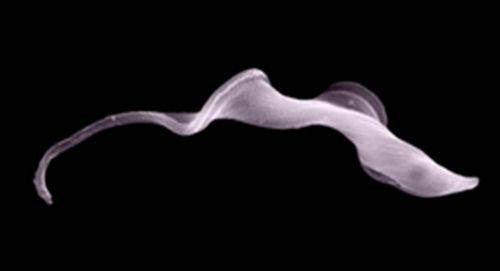
13/12/2017
ALBA Synchrotron Works for People’s Health
ALBA Synchrotron Works for People’s Health
Two recent works remind us that ALBA synchrotron is a very valuable tool to help develop new drugs.
On one hand, using the MIRAS beam line of the ALBA synchrotron (infrared radiations), researchers from the Universitat Autònoma de Barcelona (UAB) and the ALBA Synchrotron have demonstrated in a paper the capability of metalosomes - aggregates made of phospholipids and metal complexes - to interact with cells and release carbon monoxide in a controlled way (CO release can be beneficial because of its anti-inflammatory, vasodilator and cardio protective properties).
On the other hand, in another publication, a team led by researchers from the Universitat Politècnica de Catalunya (UPC) has unveiled the mechanism of action of two drugs, FR60 and JNI18, which cure 100% of mice with sleeping sickness. Using X-rays of the ALBA XALOC beam line, they have observed how these drugs perfectly stacked on the Trypanosoma brucei’s DNA, the parasite that causes the disease (image). Blocking and inflicting specific damage on its DNA, the parasite cannot reproduce and finally dies after 4-5 days.
On one hand, using the MIRAS beam line of the ALBA synchrotron (infrared radiations), researchers from the Universitat Autònoma de Barcelona (UAB) and the ALBA Synchrotron have demonstrated in a paper the capability of metalosomes - aggregates made of phospholipids and metal complexes - to interact with cells and release carbon monoxide in a controlled way (CO release can be beneficial because of its anti-inflammatory, vasodilator and cardio protective properties).
On the other hand, in another publication, a team led by researchers from the Universitat Politècnica de Catalunya (UPC) has unveiled the mechanism of action of two drugs, FR60 and JNI18, which cure 100% of mice with sleeping sickness. Using X-rays of the ALBA XALOC beam line, they have observed how these drugs perfectly stacked on the Trypanosoma brucei’s DNA, the parasite that causes the disease (image). Blocking and inflicting specific damage on its DNA, the parasite cannot reproduce and finally dies after 4-5 days.
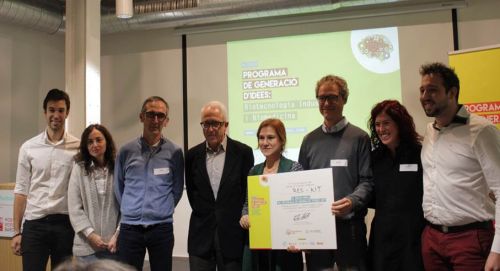
01/12/2017
NanoPlastics Awarded As Best Business Idea Of The UAB University Research Park
NanoPlastics Awarded As Best Business Idea Of The UAB University Research Park
The Ideas Generation Program organized by PRUAB, the UAB University research park, is an original initiative sponsored by Barcelona Synchrotron Park: every year, it aims at offering companies the benefit of the UAB researchers’ wealth of creativity to get proposals to their technological challenges.
Biotechnology and biomedicine are the focus of the 6th edition: different challenges from this field coming from local companies were gathered and presented in early October. From then onwards, 9 projects involving 40 people from 10 different research centers have emerged thanks to the help of experts in coaching, entrepreneurship, innovation, management, intellectual property etc. 6 of them were selected as finalists.
On November 30, the 3 best projects were rewarded by a panel of experts in promotion of business ideas. Top prize (€ 2,500 and a six-month stay in the PRUAB business incubator) was awarded to the Nanoplastic project that aims at developing a plastic film with an antibacterial activity due to nanostructuration in order to package food with and extended useful life. This project is carried out by researchers from the Catalan Institute of Nanoscience and Nanotechnology (ICN2), the UAB Neurosciences Institute (INC UAB) and the Center for Research in Agricultural Genomics (CRAG).
The second prize was awarded by Barcelona Synchrotron Park Director Mr. Pere Solà (see picture) to the RES-KIT project, the first pen-site kit designed for detecting antimicrobial resistance genes that will allow an individual and rapid dairy cows treatment of mastitis. The third prize was for the Ovatec project that aims at producing in vitro cattle embryos.
Congratulations!
Biotechnology and biomedicine are the focus of the 6th edition: different challenges from this field coming from local companies were gathered and presented in early October. From then onwards, 9 projects involving 40 people from 10 different research centers have emerged thanks to the help of experts in coaching, entrepreneurship, innovation, management, intellectual property etc. 6 of them were selected as finalists.
On November 30, the 3 best projects were rewarded by a panel of experts in promotion of business ideas. Top prize (€ 2,500 and a six-month stay in the PRUAB business incubator) was awarded to the Nanoplastic project that aims at developing a plastic film with an antibacterial activity due to nanostructuration in order to package food with and extended useful life. This project is carried out by researchers from the Catalan Institute of Nanoscience and Nanotechnology (ICN2), the UAB Neurosciences Institute (INC UAB) and the Center for Research in Agricultural Genomics (CRAG).
The second prize was awarded by Barcelona Synchrotron Park Director Mr. Pere Solà (see picture) to the RES-KIT project, the first pen-site kit designed for detecting antimicrobial resistance genes that will allow an individual and rapid dairy cows treatment of mastitis. The third prize was for the Ovatec project that aims at producing in vitro cattle embryos.
Congratulations!

23/11/2017
The Excellence of Natura Bissé Awarded by Forbes Travel Guide
The Excellence of Natura Bissé Awarded by Forbes Travel Guide
While the construction of the Natura Bissé’s new headquarters in the Barcelona Synchrotron Park (BSP) is progressing as planned, Natura Bissé, a Spanish family business leader in innovation and development of high-end cosmetic products, announced that the company has been recognized by Forbes Travel Guide, a world authority in luxury travels.
These awards recognize the company’s commitment to excellence, the business model, customer service and the quality of the products.
It is the first time ever that Forbes Travel Guide, the only independent global rating system for luxury hotels, restaurants and spas, awards the “In partnership with” label to a skincare brand and makes Natura Bissé its “Official Skincare Brand”.
Natura Bissé is present in 35 countries and is currently committed to a growth plan that includes the consolidation and the expansion in high potential cosmetic markets such as the Asian one, which already represents 14% of Natura Bissé’s turnover. The company employs 300 people and generated a € 49.7 million turnover in 2015, which is expected to double in 2020.
Congratulations!
These awards recognize the company’s commitment to excellence, the business model, customer service and the quality of the products.
It is the first time ever that Forbes Travel Guide, the only independent global rating system for luxury hotels, restaurants and spas, awards the “In partnership with” label to a skincare brand and makes Natura Bissé its “Official Skincare Brand”.
Natura Bissé is present in 35 countries and is currently committed to a growth plan that includes the consolidation and the expansion in high potential cosmetic markets such as the Asian one, which already represents 14% of Natura Bissé’s turnover. The company employs 300 people and generated a € 49.7 million turnover in 2015, which is expected to double in 2020.
Congratulations!
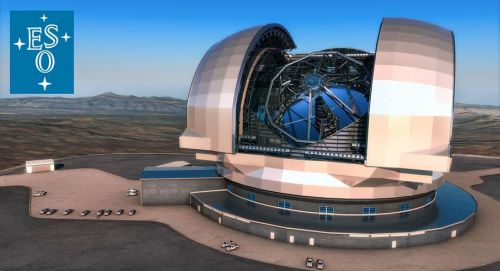
08/11/2017
SENER, 50 Years in Space and Ambitious Projects Such As the E-ELT Telescope
SENER, 50 Years in Space and Ambitious Projects Such As the E-ELT Telescope
Last week in Barcelona, the SENER international engineering and technology group with Catalan headquarters in the Barcelona Synchrotron Park (BSP) celebrated its 50th year working in space with a great conference about exoplanets by IEEC (Catalan Institute of Space Sciences) director Prof. Ignasi Ribas.
This celebration provided an opportunity to remind the different space projects SENER was involved in during the last 50 years: about 300 devices and subsystems in different satellites and space vehicles for agencies from the US (NASA), Europe (ESA), Japan (JAXA) and Russia (Roscosmos). Among the more recent projects, some famous missions can be mentioned: Rosetta (2004), Herschel & Planck (2009), Curiosity (2011), Gaia (2013), LISA Pathfinder (2015) or ExoMars 2020.
Regarding SENER future projects, the ESO (European Southern Observatory) European Extremely Large Telescope was highlighted during the conference. By the way, the E-ELT will be the largest optical/infrared telescope ever built with a complex 5 mirrors system… of 39-meter aperture!
In this project, a SENER’s team from the Barcelona Synchrotron Park will design and build the cells of the secondary and tertiary mirrors (M2 and M3) as well as the corresponding control systems and auxiliary equipment that will insure that these large but flexible mirrors keep their shape and maintain their correct position in the telescope.
Mirror 2 (4.2 meters diameter, 3.5 tons) and Mirror 3 (3.8 meters diameter, 3.2 tons) have to be delivered by the end of 2018 and by mid-2019, respectively.
Congratulations!
This celebration provided an opportunity to remind the different space projects SENER was involved in during the last 50 years: about 300 devices and subsystems in different satellites and space vehicles for agencies from the US (NASA), Europe (ESA), Japan (JAXA) and Russia (Roscosmos). Among the more recent projects, some famous missions can be mentioned: Rosetta (2004), Herschel & Planck (2009), Curiosity (2011), Gaia (2013), LISA Pathfinder (2015) or ExoMars 2020.
Regarding SENER future projects, the ESO (European Southern Observatory) European Extremely Large Telescope was highlighted during the conference. By the way, the E-ELT will be the largest optical/infrared telescope ever built with a complex 5 mirrors system… of 39-meter aperture!
In this project, a SENER’s team from the Barcelona Synchrotron Park will design and build the cells of the secondary and tertiary mirrors (M2 and M3) as well as the corresponding control systems and auxiliary equipment that will insure that these large but flexible mirrors keep their shape and maintain their correct position in the telescope.
Mirror 2 (4.2 meters diameter, 3.5 tons) and Mirror 3 (3.8 meters diameter, 3.2 tons) have to be delivered by the end of 2018 and by mid-2019, respectively.
Congratulations!
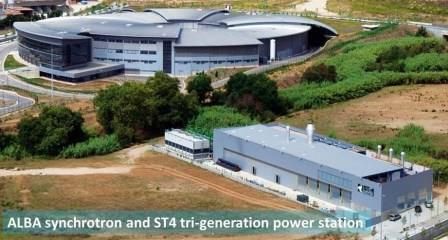
02/11/2017
The Barcelona Synchrotron Park in the SmartReFlex European project
The Barcelona Synchrotron Park in the SmartReFlex European project
The recently closed SmartReFlex European project (2014-2017) reported its findings.
District Heating and Cooling-DHC systems are key elements in the urban development of the so-called smart cities and the European Union wants to promote their development: the SmartReFlex project aimed at extending and using 100% renewable energies-based DHC infrastructures in European cities.
This project gathered 14 partners from 5 different countries (Germany, Spain, Ireland, Denmark and Italy as the leader) and 6 study regions. For their own part, Catalan partners are the IREC energy research institute and the INCASOL regional agency in charge of the management of public lands (INCASOL and the local city council of Cerdanyola del Vallès jointly form the Barcelona Synchrotron Park (BSP) consortium).
BSP was one of the case studies of the project with its natural gas trigeneration power station (see picture) that produces electricity and hot and cool water distributed throughout the park. This DHC system offers BSP companies a significant simplification of their air-conditioning design and reduces energy costs (up to 20%). This centralized system also helps reduce the corresponding CO2 emission (up to 35%). Besides, the BSP DHC system provides the ALBA synchrotron with redundant electricity.
BSP attended the meetings and seminars organized by the Catalan Taskforce with specialists from both public and private sectors. The aim of this Taskforce was to design a regional strategy in order to overcome the current barriers against DHC implementation and the corresponding use of renewable energies (RE).
Regarding global results, 12 improved policies at regional and local level for the promotion of RE-DHC have been carried out and the technical and economic viability of implementing RE-DHC in a total of 24 case studies has been proved, among others.
BSP local contact: Carlos Dapena
SmartReFlex project website.
Catalan Taskforce conclusions in Catalan or in Spanish.
District Heating and Cooling-DHC systems are key elements in the urban development of the so-called smart cities and the European Union wants to promote their development: the SmartReFlex project aimed at extending and using 100% renewable energies-based DHC infrastructures in European cities.
This project gathered 14 partners from 5 different countries (Germany, Spain, Ireland, Denmark and Italy as the leader) and 6 study regions. For their own part, Catalan partners are the IREC energy research institute and the INCASOL regional agency in charge of the management of public lands (INCASOL and the local city council of Cerdanyola del Vallès jointly form the Barcelona Synchrotron Park (BSP) consortium).
BSP was one of the case studies of the project with its natural gas trigeneration power station (see picture) that produces electricity and hot and cool water distributed throughout the park. This DHC system offers BSP companies a significant simplification of their air-conditioning design and reduces energy costs (up to 20%). This centralized system also helps reduce the corresponding CO2 emission (up to 35%). Besides, the BSP DHC system provides the ALBA synchrotron with redundant electricity.
BSP attended the meetings and seminars organized by the Catalan Taskforce with specialists from both public and private sectors. The aim of this Taskforce was to design a regional strategy in order to overcome the current barriers against DHC implementation and the corresponding use of renewable energies (RE).
Regarding global results, 12 improved policies at regional and local level for the promotion of RE-DHC have been carried out and the technical and economic viability of implementing RE-DHC in a total of 24 case studies has been proved, among others.
BSP local contact: Carlos Dapena
SmartReFlex project website.
Catalan Taskforce conclusions in Catalan or in Spanish.
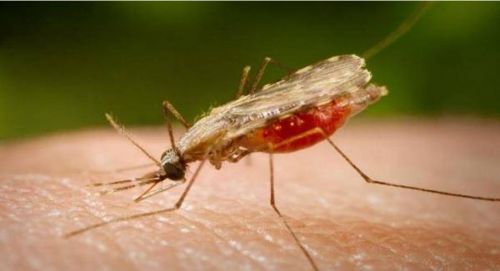
26/10/2017
New Findings on Malaria Thanks to ALBA Synchrotron
New Findings on Malaria Thanks to ALBA Synchrotron
An international team has unravelled details never described before about how the malaria parasite acts after invading the red blood cells. This highlight has been possible thanks to two advanced microscope techniques combination: X-ray fluorescence microscopy and soft X-rays tomography, this one conducted in ALBA Synchrotron (MISTRAL beam line).
Infected red blood cells image analysis offer new information that could yield new drugs design against malaria, an illness that claims over 400.000 lives each year.
The study comes about thanks to the cooperation between international research centres: the Niels Bohr Institute from University of Copenhagen, Helmholtz Research Center from Berlin, Paul Scherrer Institute from Switzerland, Weizmann Institute of Science from Israel, and ALBA Synchrotron, BESSY-II, the Swiss Light Source and the European synchrotron ESRF in France.
Congratulations!
More information: ALBA’s press release
Infected red blood cells image analysis offer new information that could yield new drugs design against malaria, an illness that claims over 400.000 lives each year.
The study comes about thanks to the cooperation between international research centres: the Niels Bohr Institute from University of Copenhagen, Helmholtz Research Center from Berlin, Paul Scherrer Institute from Switzerland, Weizmann Institute of Science from Israel, and ALBA Synchrotron, BESSY-II, the Swiss Light Source and the European synchrotron ESRF in France.
Congratulations!
More information: ALBA’s press release









